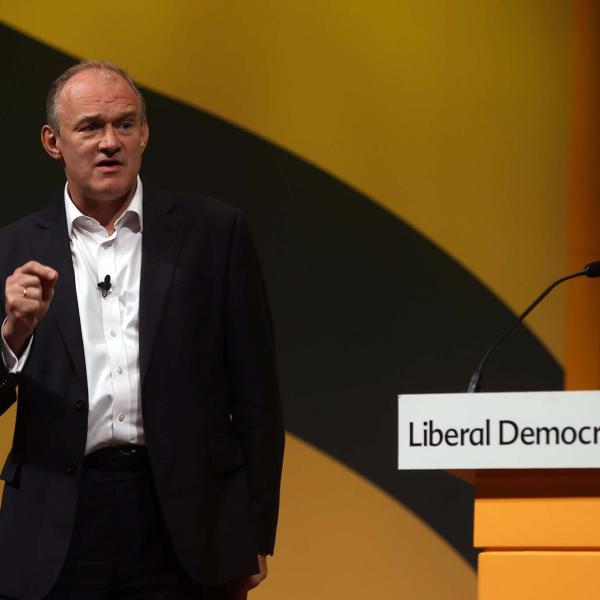On Tuesday the Prime Minister announced a new funding settlement for health and social care in England. This included an additional £6.6 billion for NHS England in 2022−23 and £3.6 billion in 2023−24, on top of pre-pandemic plans, in the face of ongoing pressures from the COVID-19 pandemic.
This new fundingwill likely be sufficient to cover COVID-19-related pressures on the NHS over the next two years, 2022−23 and 2023−24. And if the government achieves its objective of boosting NHS capacity by 10%, waiting lists could return to pre-pandemic levels within three or four years.
But the government’s new plans imply next-to-nothing in the way of additional virus-related support after that point, suggesting that the newly announced funding might be insufficient to meet virus-related pressures in the medium term: we estimate a possible shortfall of around £5 billion in 2024−25. The most likely outcome is that future top-ups will be made to meet ongoing pandemic-related cost and demand pressures on the health service.
These are amongst the findings of the first detailed, independent assessment of how the government’s new funding settlement compares with the pressures facing the health service, published today as a pre-released chapter of the 2021 IFS Green Budget, funded by the Nuffield Foundation and in partnership with Citi.
The research also finds that:
- The NHS was showing clear signs of strain even before the pandemic began. The waiting list for elective treatment had grown by 50% since 2015; just 83% of A&E patients were seen within four hours in February 2020 (down from 92% in February 2015); and the estimated cost of eradicating the ‘high-risk’ maintenance backlog had quadrupled since 2010.
- Following a decade of big budget increases, between 2009−10 and 2019−20 UK government health spending grew at an average real-terms rate of 1.6% per year – lower than any previous decade in NHS history. The NHS entered the pandemic with 39,000 nursing vacancies in England, and fewer doctors, hospital beds and CT scanners per person than in many similar countries. Continued public sector pay restraint has meant real-terms pay cuts for many NHS staff: average pay for consultants in 2021 is 9% lower in real terms than it was in 2011. It is 4% lower for junior doctors and 5% lower for nurses.
- The new health and social care settlement provides an additional £11.2 billion for the Department of Health and Social Care (DHSC) in 2022−23 and £9.0 billion in 2023−24. Of that, around £1.8 billion each year is earmarked for social care (assuming that the £5.4 billion over three years is spread evenly). That leaves around £9 billion of additional funding in 2022−23 and £7 billion in 2023−24, to deal with health-related COVID-19 pressures: enough to meet our estimates of the pressures in those two years (which our analysis suggests will require £9 billion in 2022−23 and £6 billion in 2023−24).
- Within the total, the government’s settlement includes an extra £10.2 billion for NHS England over the first two years. This compares with estimated pressures of £10.4 billion in our central scenario, and so looks to be of about the ‘right’ scale.
- This new funding announcement is far less likely to be sufficient in the medium term. The extra funding provided for the NHS in the recent announcement will result in spending growing at 3.9% a year between 2018−19 and 2024−25, exactly the same rate of growth as was planned between 2018−19 and 2023−24. That suggests that these new plans allow for little or no long-term additional costs as a result of the pandemic, whereas we estimate that virus-related pressures could amount to £5 billion in 2024−25. Meeting those ongoing pressures would likely require additional funding, or large savings from elsewhere in the NHS budget.
- Looking ahead, direct COVID pressures will include the costs of treating patients with COVID-19 and ‘long COVID’, Test and Trace, vaccinations, PPE and other infection control measures. These pressures are substantial but are likely to fall rapidly from their current level. We estimate that the combined cost of meeting these direct pressures could be around £5.2 billion in 2022−23, falling to £2.0 billion in 2023−24 and £0.9 billion in 2024−25.
- The indirect costs and pressures associated with the pandemic could be greater and more persistent. Millions of people missed out on NHS care during the pandemic. Much of this care will need to be delivered eventually and waiting lists are likely to rise rapidly as these ‘missing’ patients come forward. We estimate that the NHS could need £2.5 billion per year between 2022−23 and 2024−25 if it is to catch up on missed activity. This could be sufficient to return waiting lists to their pre-pandemic levels within three years, if the NHS finds effective ways to boost capacity and unit costs do not increase substantially.
- The pandemic is also likely to save the NHS money in some areas. The move toremote outpatient appointments, combined with reduced demand as a result of COVID-19 deaths, could save the NHS at least £0.7 billion per year between 2022−23 and 2024− More broadly, the NHS has had to experiment hugely during the pandemic, and there are potential ‘upsides’ and gains from the resultant organisational learning.
Max Warner, a Research Economist at IFS and an author of the research, said:
‘The resources that the NHS will need to cope with pandemic-related pressures over the coming years are a huge known unknown. Based on our best estimates the funding announced by the Prime Minister this week should be enough to meet these pressures for the next two years. But the settlement seemingly allows for almost no additional virus-related spending in 2024–25, making it almost inevitable that these initial plans will be topped up down the line.’










